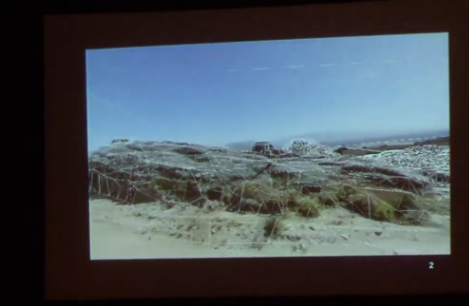Esri’s Lawrie Jordan talks about GIS as ‘critical infrastructure’
HOUSTON – “In the world of 3D, it is truly the most exciting times I can think of in the last 40 years,” said Lawrie Jordan, director of imagery at Esri, and special assistant to Jack Dangermond, the company’s president, as part of his keynote address at the SPAR International conference here.
Jordon touched on more than a few GIS trends he is seeing, including the “convergence” of GIS and 3D imaging technology, an uptick in cloud computing, and a “stunning” increase in the use of mobile technology. “An exciting area we see is measuring and capturing volunteer geographic information from social networks and social information, and, of course, the technology and science behind GIS is evolving very quickly,” he said.
Another positive trend, Jordan told SPAR attendees, is that the governance issues are “coming together with regard to open data policies.” Taken together, the aforementioned developments are forming “a very strong and very positive trend that we believe are setting the stage for a much better understanding of the world in which we live.”
Jordan added that in GIS, there is now a trend toward what he terms as “global persistent surveillance.”
“We’re trying to capture, measure, monitor, and map literally everything that moves or changes on the planet,” he said. “We then want to connect all of these different layers and look for patterns and trends and form some meaningful analysis that helps us see and answer some complicated questions.”
What is needed is a framework to bring it all together — a “special” type of infrastructure to handle the varied data. “I like to think that GIS is a form of critical infrastructure,” Jordan said, much like a power grid or the oil refinery and pipeline complex.
The cloud-computing trend is important and is not going away. It is democratizing GIS software; instead of tens of thousands of dollars for software licenses, he said, access can now be had for hundreds of dollars and only when the need is there for the software to accomplish specific goals. Further, the cloud offers the ability to store huge volumes of data and apply immense CPU processing power without the user needing to invest in such capabilities on the desktop.
Jordan also talked about VGI, volunteer geographic information, which is becoming increasingly popular in the GIS community. “We can almost think of this as citizens with sensors. Almost everyone has a cell phone, have cameras that are GPS enabled and capture quite a bit of information,” he said. How can this crowd-sourced data be harnessed by GIS professionals looking to learn and document ever more about their environments?
He added that social media, Facebook, Twitter, “are a dramatic new component of geographic information systems.” And increasingly, the information remarkably is not that error prone.
For the defense industry, this is a “gold mine of opportunity for them to look at patterns, social patterns around the world, look for trends, collect intelligence, and other information through social media.”
“I think social media is really adding a new dimension that I am excited about,” he said.






